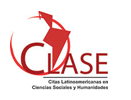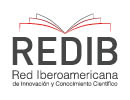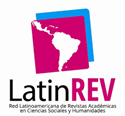Ethnicity in Peru and its multidimensional nature: a proposal for measurement
DOI:
https://doi.org/10.21142/DES-1401-2022-0012Keywords:
Ethnicity, Ethnic groups, Gaps, IndexAbstract
Ethnicity is a complex concept to define in the social sciences. This complexity is since various authors recognize ethnicity as a set of racial, social, and cultural characteristics shared by a group of people. As a result, the nature of ethnicity is multidimensional. This paper aims to construct an index that measures the multidimensionality of ethnicity using household survey data from Peru in 2007 and 2017. The method used to construct the index is Principal Component Analysis (PCA). In addition, a correlational analysis of the proposed index with the incidence of poverty, educational and labor variables is presented. Among the results found, there is a greater ethnic intensity in the population living in poverty, in illiteracy conditions
and with lower educational levels, as well as in the selfemployed population.
Downloads
References
Ahmad, W. I. U., & y Bradby, H. (2007). Locating ethnicity and health: exploring concepts and contexts. Sociology of Health & Illness, 29(6), pp. 795-–810.
Alesina, A., Michalopoulos, S., y& Papaioannou, E. (2016). Ethnic iInequality. Https://Doi .Org/10.1086/685300 Journal of Political Economy, 124(2), pp. 428-–488. https://doi.org/10.1086/685300
Arouri, M., Ben-Youssef, A., & y Nguyen, C. V. (2019). Ethnic and racial disparities in children’s education: Comparative evidence from Ethiopia, India, Peru and Viet Nam. Children and Youth Services Review, 100, pp. 503-–514.
Baldárrogo, E. (2017). Dinámicas étnicas en el Perú: hacia una caracterización y tipología para el diseño de las políticas públicas. Lima: Instituto Nacional de Estadística e Informática, INEI.
Bello M., A., & y Rangel, M. (2000). Etnicidad, “«raza”» y equidad en América Latina y el Caribe. Comisión Económica para América Latina y el Caribe, Cepal.
Burton, J., Nandi, A., y& Platt, L. (2010). Measuring ethnicity: challenges and opportunities for survey research. Ethnic and Racial StudiesHttp://Dx.Doi.Org/10.1080/01419870903527801, 33(8), pp. 1332-–1349. https://doi.org/10.1080/01419870903527801
Figueroa, A., y& Barrón, M. (2005). Inequality, eEthnicity and sSocial dDisorder in Peru. Centre for Research on Inequality, Human Security and Ethnicity, CRISE.
Galarza, F. y, & Yamada Fukusaki, G. (2012). Discriminación laboral en Lima: el rol de la belleza, la raza y el sexo. Repositorio de La Universidad Del Pacífico - UP. https://repositorio.up.edu.pe/handle/11354/388#.YWZYIQ7fiSY.mendeley
Geertz, C. (1993). The Interpretation of cCultures. (London: Fontana).
Giraldo, M. A., Díaz, A. Q., y& Calderón, M. R. (2019). Migración, autoidentificación y religión: los estudiantes de la Facultad de Letras y Ciencias Humanas (Universidad Nacional Mayor de San Marcos). Praxis, 15(2), pp. 207-–221.
Huaman, M. G., Silva, G. M., y& Sulmont, D. (2021). Coproduciendo cCategorías étnico-raciales: empadronadores en el Censo Nacional de Perú 2017. Debates eEn Sociologí{’i}a, 53, pp. 1-–37.
Instituto Nacional de Estadística e Informática, INEI. (2017). La aAutoidentificación éÉtnica: pPoblación iIndígena y aAfroperuana. INEI, 1, 25. https://www.inei.gob.pe/media/MenuRecursivo/publicaciones_digitales/Est/Lib1642/
Kolenikov, Stanislav,. y& Angeles, G. (2009). Socioeconomic status measurement with discrete proxy variables: is the Principal Component Analysis a reliable answer? Review of Income and Wealth, 55(1), pp. 128-–165. https://doi.org/10.1111/j.1475-4991.2008.00309.x
Kolenikov, Stas. (2016). Ppolychoric, by any other «’namelist»’. 2016 Stata Conference, 15.
Kolo, P. (2012). Measuring a new aspect of ethnicity: The appropriate diversity index. https://www.econstor.eu/handle/10419/92997
Martel, P., Mbofana, F., y& Cousens, S. (2021). The polychoric dual-component wealth index as an alternative to the DHS index: Addressing the urban bias. Journal of Global Health, 11, pp. 1-–19. https://doi.org/10.7189/JOGH.11.04003
Martin, E. A., y& Gerber, E. (2006). Methodological influences on comparability of race measurements: Several cautionary examples. Survey Methodology, 6.
McDonnell, J., y& De Lourenco, C. (2009). You’re Brazilian, right? What kind of Brazilian are you? The racialization of Brazilian immigrant women. Ethnic and Racial Studies, 32(2), pp. 239-–256.
Morley, S. (2017). Changes in rural poverty in Perú 2004-2012. Latin American Economic Review, 26(1), pp. 1-–20.
Ñopo, H., Saavedra, J., y& Torero, M. (2007). Ethnicity and eEarnings in a mMixed‐rRace lLabor mMarket. Economic Development and Cultural Change, 55(4), pp. 709-–734. https://doi.org/10.1086/516762
Paredes, M., y& House, Q. E. (2007). Fluid identities: Exploring ethnicity in Peru. Centre for Research on Inequality, Human Security and Ethnicity, CRISE.
Pasquier-Doumer, L., y& Risso Brandon, F. (2015). Aspiration fFailure: A pPoverty tTrap for iIndigenous cChildren in Peru? World Development, 72, pp. 208-–223. https://doi.org/10.1016/J.WORLDDEV.2015.03.001
Phinney, J. S. (1990). Ethnic identity in adolescents and adults: review of research. Psychological Bulletin, 108(3), p. 499.
Presidencia del Consejo de Ministros. (2013). Perú: Tercer Informe Nacional de Cumplimiento de los Objetivos de Desarrollo del Milenio. Organización de lLas Naciones Unidas. Sistema de Naciones Unidas eEn eEl Perú.
Ravallion, M. (2019). Ethnic iInequality and pPoverty in Malaysia sSince 1969. https://doi.org/10.3386/W25640
Roth, W. D. (2016). The multiple dimensions of race. Ethnic and Racial Studies. Ethnic and Racial Studies, 39(8), pp. 1310-–1338. https://doi.org/https://doi.org/10.1080/01419870.2016.1140793
Saavedra, J., y& Chong, A. (1999). Structural reform, institutions and earnings: Evidence from the formal and informal sectors in urban Peru. The Journal of Development Studies, 35, pp. 95-–116. https://doi.org/https://doi.org/10.1080/00220389908422582
Saavedra, J., Torero, M., y& Ñopo, H. (2004). Ethnicity and eEarnings in uUrban Peru. Institute for the Study of Labor Discussion Papers, 980.
Schkolnik, S. (2009). La inclusión del enfoque étnico en los censos de población de América Latina. Notas de Población, Cepal, 89, pp. 57-100. http://hdl.handle.net/11362/12857
Sharma, S. (1996). Applied multivariate techniques. John Wiley & Sons Inc.
Stepner, M. (2013). BINSCATTER: Stata module to generate binned scatterplots. EconPapers.
Sulmont, D. (2010). Raza y etnicidad desde las encuestas sociales y de opinión: dime cuántos quieres encontrar y te diré qué preguntar..…. . https://centroderecursos.cultura.pe/sites/default/files/rb/pdf/Raza%20y%20etnicidad%20desde%20las%20encuestas%20sociales%20y%20de%20opinion.pdf La Discriminación Social En El Perú: Investigación y Reflexión.
Sulmont, D. (2011). Race, eEthnicity and pPolitics in tThree Peruvian lLocalities: An aAnalysis of the 2005 CRISE pPerceptions sSurvey in Peru. Latin American and Caribbean Ethnic Studies, 6(1), pp. 47-–78. https://doi.org/10.1080/17442222.2011.543873
Susana Schkolnik. (2009). La inclusión del enfoque étnico en los censos de población de América Latina. Notas de Población - Cepal, 89, 57–100. http://hdl.handle.net/11362/12857
Taş, E. O., Reimão, M. E., y& Orlando, M. B. (2014). Gender, eEthnicity, and cCumulative dDisadvantage in eEducation oOutcomes. World Development, 64, pp. 538-–553. https://doi.org/10.1016/J.WORLDDEV.2014.06.036
Telles, E., Flores, R. D., y& Urrea-Giraldo, F. (2015). Pigmentocracies: Educational inequality, skin color and census ethnoracial identification in eight Latin American countries. Research in Social Stratification and Mobility, 49, pp. 39-–58. https://doi.org/10.1016/J.RSSM.2015.02.002
Trivelli, C., Von Hesse, M., Diez, A., y& Del Castillo, L. (2000). Desafíos del desarrollo rural en el Perú. Consorcio de Investigación Económica y Social, Lima.
Vyas, S., y& Kumaranayake, L. (2006). Constructing socio-economic status indices: how to use principal components analysis. Health Policy and Planning, 21(6), pp. 459-–468. https://doi.org/10.1093/heapol/czl029
Woo-Mora, L. G. (2021). Unveiling the cCosmic rRace: Racial iInequalities in Latin America. SSRN Electronic Journal. https://doi.org/10.2139/SSRN.3870741
Wooldridge, J. M. (2015). Introductory econometrics: A modern approach. Cengage Llearning.
Yamada, G. (1996). Urban informal employment and self-employment in developing countries: Theory and eEvidence. Economic Development and Cultural Change, 44(2), pp. 289-–314. https://doi.org/https://doi.org/10.1086/452214
Downloads
Published
Issue
Section
License

Esta obra está bajo una licencia http://creativecommons.org/licenses/by-nc-sa/4.0/



















